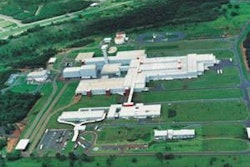Pig prices in several part of the world have jumped to considerably higher levels within recent weeks. Some areas report a major return to profitability for producers, although the price in other places remains below the local cost of production.
The increases are easy to explain in a few individual cases across Asia. In Korea, for example, the higher price for pork reflects opposition to eating chicken among consumers who have been disturbed by the cases of avian influenza being reported in Korean poultry flocks. There were already signs of a switch in consumption patterns away from beef, attributed to concern over the disease BSE after the re-opening of imports of beef from the USA.
In its network wide survey of 111 outlets, Korean retailer E-Mart reported a 39.2% rise in pork sales in the first week of May, compared with a month earlier.
A Chosun Ilbo survey in the same period found 35.7% of total meat sales were of pork and only 34.3% beef. Market analysts say the trend is helped by the normal summer-time change that sees consumer preferences in Korea switch from beef to pork for outdoor meals and picnics.
Cambodia’s pig price has reached record levels recently after government action to stop imported supplies. Reports say Cambodian prices have increased from US$1/kg to nearly US$2.5/kg in just over a year.
Vietnam reportedly has a 30% shortfall in the amount of pigmeat available to meet local demand, following the extensive losses in its herds due to the disease high-fever PRRS.
 0805hogprices
0805hogprices
The accompanying graph, prepared for the Asian regional office of FAO, illustrates how prices for live pigs have moved sharply upwards in these countries and in China. Reduced supplies are also a problem on China’s market, with the latest forecasts saying that national pork production this year may still be 16% below the 2005 level despite starting a recovery from the PRRS-related downturn of 2007. Chinese supplies are also reckoned to have been hit by the storms and snowfalls at the start of 2008 that were blamed for cutting the total on-farm pig inventory by as much as 1%.



.png?auto=format%2Ccompress&fit=crop&h=167&q=70&w=250)













